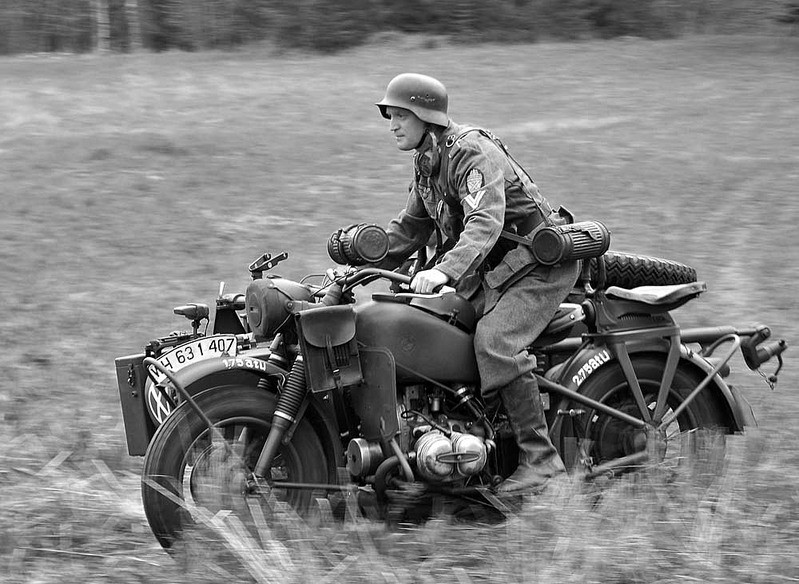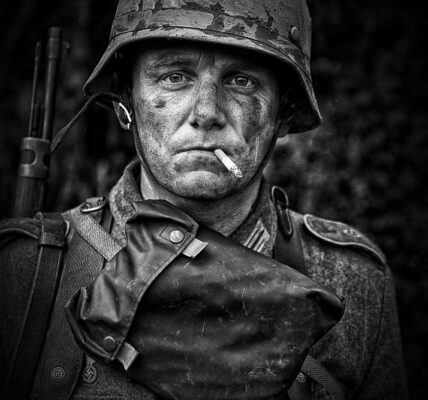
The motorcycle police played a crucial role in the Wehrmacht’s logistics and communications during World War II. Historical photographs, such as those provided by collectors like the “World War 2 Collector,” offer us the opportunity to take a closer look at these fascinating and often underestimated aspects of war history.
The images show police units on their motorcycles, which were specially adapted for use in various regions of Europe. Motorcycles such as the BMW R75 or the Zundapp KS 750 were particularly popular. These machines were not only a means of fast transport, but were also used as communications platforms and for reconnaissance missions. They were often equipped with a sidecar that could carry either an additional person, equipment, or even a light weapon.
During World War II, mobility was a crucial factor, and the motorcycle police were able to utilize this mobility effectively. Their tasks ranged from controlling supply routes and securing occupied territories to monitoring the civilian population in occupied countries. Many of these units were deployed in Eastern Europe, France, and even North Africa. The roads were often in poor condition, posing immense challenges for the motorcycles and their riders.
The German police motorcycles were technically impressive. The BMW R75, for example, was equipped with a 745 cc engine and had all-wheel drive for the sidecar. This made it an ideal vehicle for difficult terrain. The Zundapp KS 750 was similarly robust and, with its 751 cc engine, could reach speeds of up to 95 km/h. Both models had an astonishing range of about 300 kilometers on a single tank of fuel, making them suitable for long missions.

The photographs show not only the machines, but also the soldiers who rode them. They convey a sense of the harsh reality these men faced. Whether in snowy forests, on dusty roads, or in devastated cities, the motorcycle police were always on duty. The images also clearly demonstrate how important uniforms and equipment were to remain operational under extreme conditions.
For many collectors and history buffs, these photos are invaluable. They reveal a lesser-known side of the war and shed light on the technology and strategy behind the German war machine.










